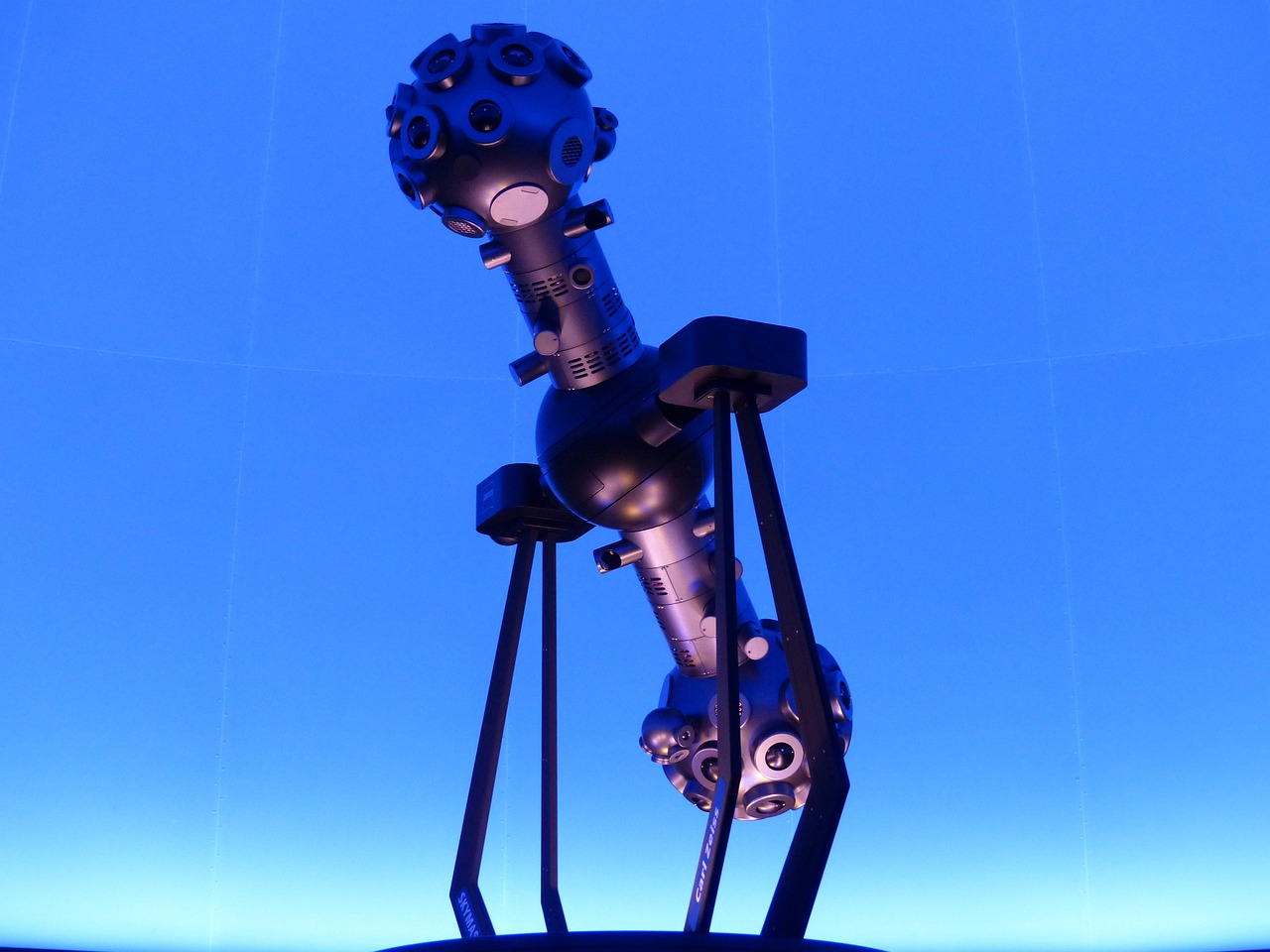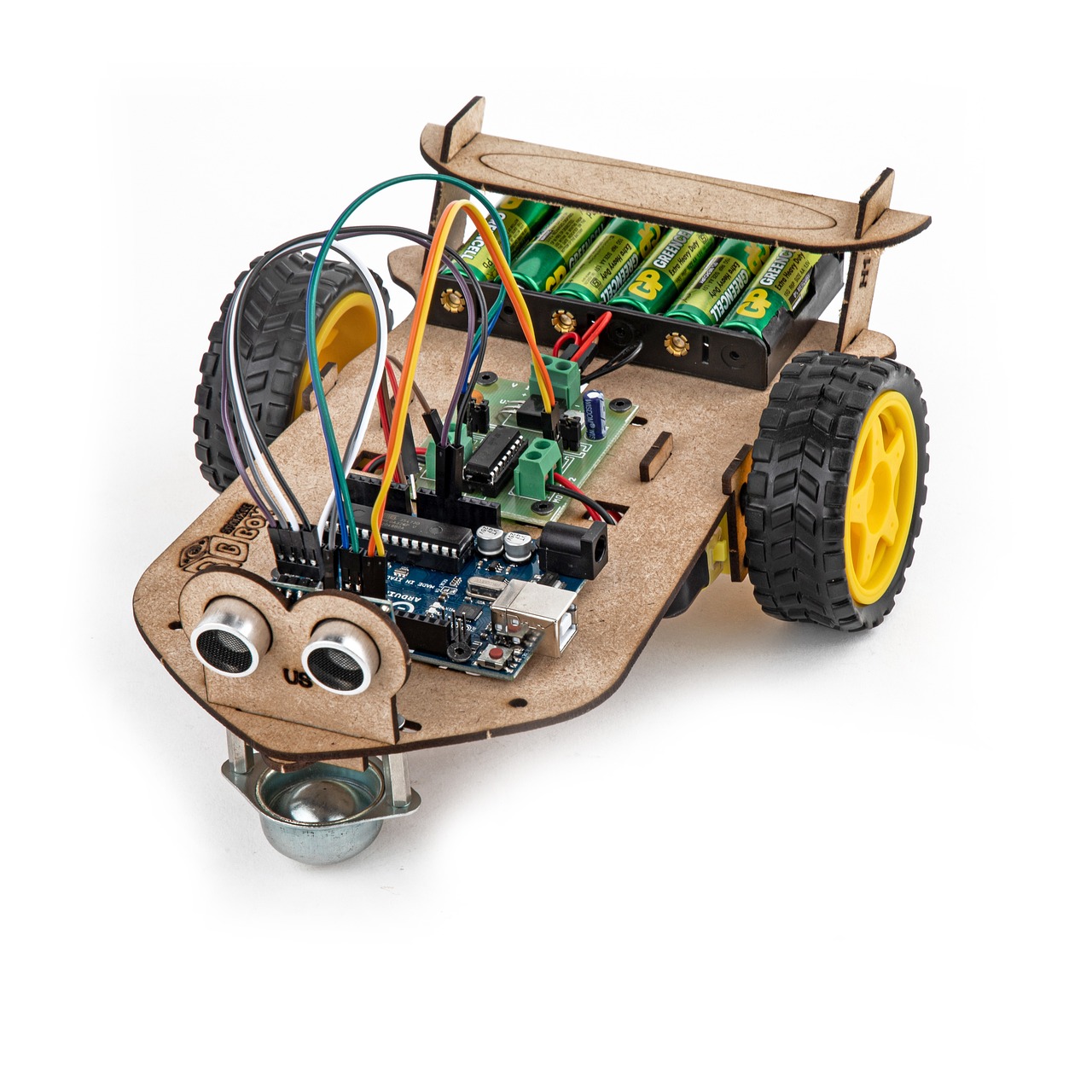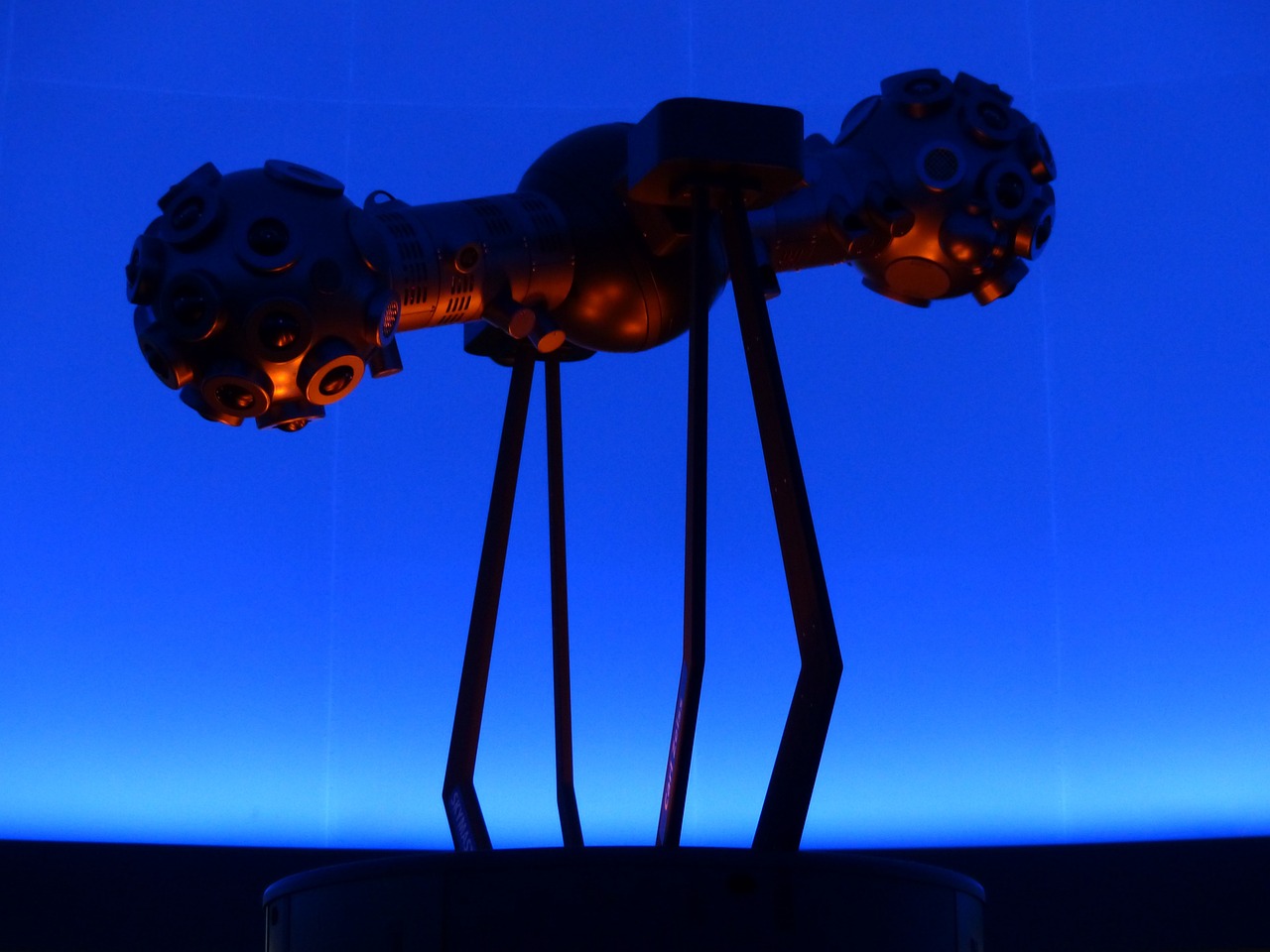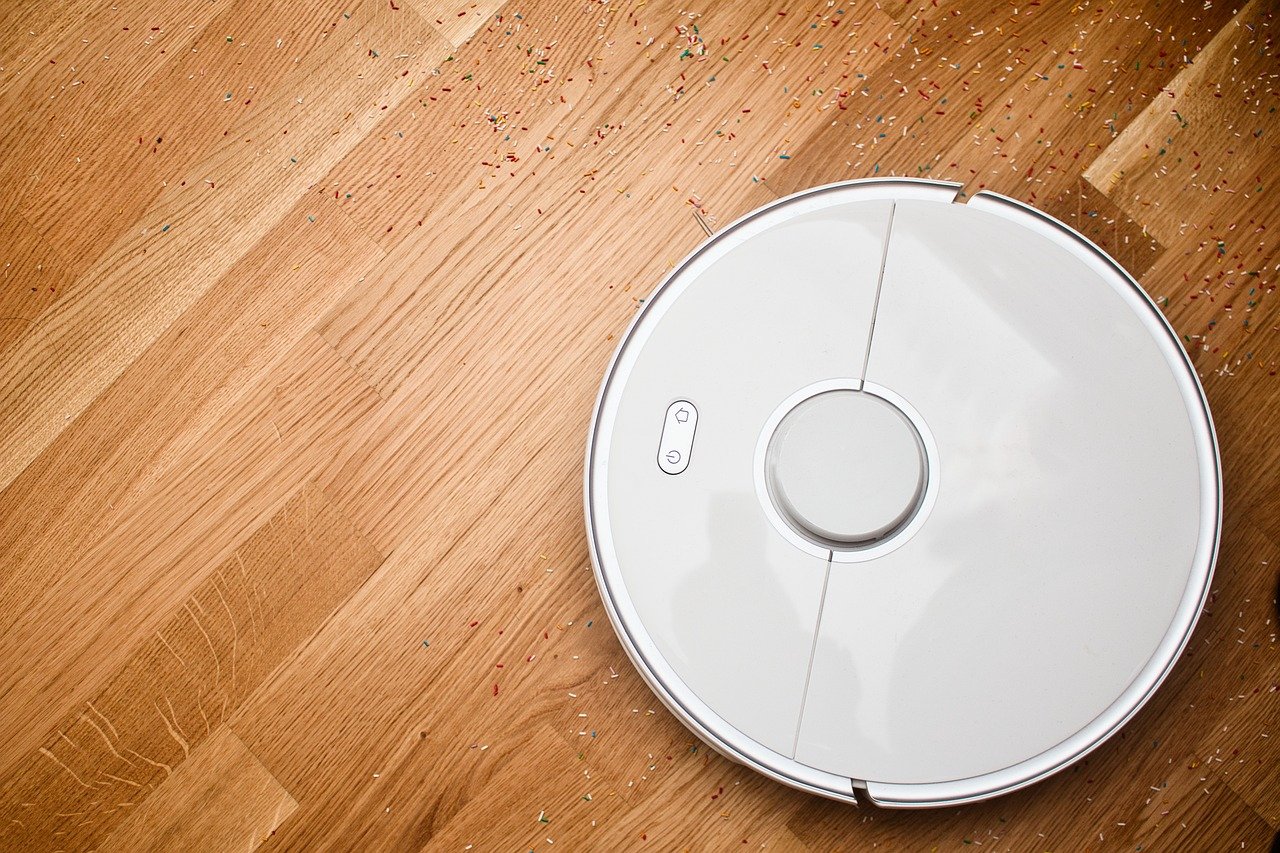The Impact of the Sentry Robot on Base Defense
In an age where technology is rapidly reshaping the landscape of military operations, sentry robots have emerged as a game-changer in base defense. Imagine a world where soldiers are not just relying on their instincts and training but are supported by autonomous machines that can monitor, assess, and respond to threats in real-time. These robots are revolutionizing how military bases are secured, providing advanced technological support that enhances both safety and operational efficiency.
The evolution of sentry robots is a story of innovation and adaptation. Initially conceived as simple surveillance tools, these machines have undergone significant transformations, evolving into sophisticated systems capable of performing complex tasks. They are designed not just to observe but to integrate seamlessly with existing military infrastructure. This integration allows for a more comprehensive approach to security, where human soldiers and robotic sentinels work side by side to protect their bases from potential threats.
What sets these robots apart is their ability to operate autonomously. Equipped with advanced sensors and artificial intelligence, sentry robots can navigate their environments, identify potential dangers, and make informed decisions without human intervention. This capability is crucial, especially in high-stakes situations where every second counts. The integration of AI and machine learning further enhances their performance, enabling them to adapt and respond to new challenges as they arise.
Moreover, the impact of sentry robots extends beyond just physical security. They allow military personnel to allocate resources more efficiently, reducing the need for human presence in high-risk areas. This not only keeps soldiers safer but also optimizes operational effectiveness. Imagine a scenario where a sentry robot can detect an intruder before they even reach the perimeter, allowing troops to prepare and respond without putting themselves in harm's way.
However, the rise of sentry robots is not without its challenges. As with any technology, there are concerns regarding reliability and ethical implications. Questions arise about the decision-making capabilities of these machines, particularly in combat scenarios. How do we ensure that a robot makes the right choice in a life-and-death situation? Additionally, there are technical vulnerabilities that could compromise their effectiveness, such as cyber threats that could manipulate their systems.
Looking ahead, the future of sentry robots in defense appears bright. Ongoing research and development are likely to yield even more advanced capabilities, further enhancing their role in military strategies. As we continue to explore the potential of these machines, one thing is clear: the integration of sentry robots into base defense is not just a trend but a fundamental shift in how we approach security in the modern world.
- What are sentry robots? Sentry robots are autonomous machines designed for surveillance and defense, capable of monitoring environments and responding to threats without human intervention.
- How do sentry robots enhance base defense? They improve security by providing real-time monitoring, threat detection, and allowing for safer resource allocation, reducing the need for human presence in high-risk areas.
- What technologies are integrated into sentry robots? Sentry robots utilize advanced sensors, artificial intelligence, and machine learning to enhance their operational capabilities and decision-making processes.
- Are there ethical concerns regarding sentry robots? Yes, the use of autonomous robots raises ethical questions about decision-making in combat scenarios and the potential consequences of their actions.
- What challenges do sentry robots face? Challenges include reliability, ethical implications, and technical vulnerabilities, particularly regarding cyber threats that could compromise their effectiveness.

Overview of Sentry Robots
Sentry robots are autonomous machines that have taken the concept of surveillance and defense to a whole new level. Imagine a tireless guardian that never sleeps, constantly on the lookout for potential threats. These remarkable devices have evolved significantly over the years, transitioning from simple surveillance tools to sophisticated systems capable of making real-time decisions. Their primary functionalities include monitoring perimeters, detecting intrusions, and even engaging with potential threats when necessary. As technology has advanced, so too have the capabilities of these robots, making them an indispensable part of modern military operations.
The integration of sentry robots into existing military frameworks is seamless, enhancing operational efficiency. These robots are equipped with an array of sensors, cameras, and communication devices that allow them to function effectively in various environments. For instance, they can operate in harsh terrains, adverse weather conditions, and even in urban settings where traditional defense mechanisms might fall short. The adaptability of sentry robots means they can be deployed in various scenarios, from protecting military bases to securing critical infrastructure.
Furthermore, the evolution of sentry robots has been marked by their increasing intelligence. Early models were primarily remote-controlled, requiring human operators to monitor and respond to threats. However, advancements in artificial intelligence and machine learning have enabled these robots to operate autonomously, making decisions based on their programming and learned experiences. This shift not only reduces the burden on human soldiers but also enhances the speed and accuracy of threat detection.
To give you a clearer picture, let's take a look at a comparison of the functionalities of early sentry robots versus modern versions:
| Feature | Early Sentry Robots | Modern Sentry Robots |
|---|---|---|
| Control Mechanism | Remote-controlled | Autonomous operation |
| Sensor Technology | Basic cameras | Advanced sensors (thermal, infrared, etc.) |
| Decision Making | Human-operated | AI-driven |
| Response Speed | Delayed response | Immediate threat assessment |
As we continue to witness the rapid evolution of these sentry robots, it is essential to understand their role not just as machines but as critical components of a larger defense strategy. Their ability to function autonomously while integrating seamlessly with human operators sets them apart in the realm of military technology. In the next sections, we will delve deeper into the technological advancements that have propelled these robots into the forefront of base defense mechanisms.
- What are sentry robots used for?
Sentry robots are primarily used for surveillance, monitoring perimeters, detecting intrusions, and providing immediate responses to potential threats. - How do sentry robots make decisions?
Modern sentry robots utilize artificial intelligence and machine learning to analyze data and make real-time decisions based on their programming and learned experiences. - Can sentry robots operate in harsh environments?
Yes, sentry robots are designed to function effectively in various environments, including harsh terrains and adverse weather conditions. - What advancements have been made in sentry robot technology?
Recent advancements include improved sensor technology, autonomous operation, and enhanced decision-making capabilities through AI integration.

Technological Advancements
The world of military technology is evolving at breakneck speed, and sentry robots are at the forefront of this revolution. These autonomous machines have undergone significant transformations, thanks to recent advancements in technology. Imagine a future where robots not only patrol military bases but also make real-time decisions to enhance security. This is not science fiction; it’s happening right now!
One of the most exciting developments in sentry robots is the integration of advanced sensors that allow them to gather a wealth of data from their surroundings. These sensors can detect movement, heat signatures, and even sounds, giving the robots a multi-dimensional understanding of their environment. For instance, a sentry robot equipped with thermal imaging can identify intruders in complete darkness, ensuring that no threat goes unnoticed. This capability significantly enhances operational efficiency, making them invaluable assets in military operations.
Moreover, the advent of artificial intelligence (AI) and machine learning has transformed how sentry robots operate. AI enables these machines to analyze data and learn from their experiences, which means they can adapt to new threats and changing environments. For example, if a sentry robot encounters a new type of intrusion, it can adjust its protocols and responses based on the data it collects. This adaptability is crucial in military settings where situations can evolve rapidly.
When we talk about AI and machine learning in sentry robots, we're discussing a game-changer for military operations. These technologies allow robots to perform complex tasks autonomously, which means they can take on responsibilities that would typically require human intervention. Imagine a scenario where a sentry robot spots an unidentified object approaching a base. Instead of waiting for human operators to assess the situation, the robot can instantly analyze the threat level and decide whether to alert the troops or take defensive measures.
One of the standout features of modern sentry robots is their ability to process data in real time. This capability is akin to having a supercharged brain that can analyze and interpret vast amounts of information almost instantaneously. For instance, when a sentry robot detects unusual activity, it can quickly assess the situation and provide immediate feedback to command centers. This rapid response can be the difference between thwarting an attack and facing a significant breach in security.
Adaptive learning mechanisms are another remarkable aspect of sentry robots. These systems allow robots to improve their performance over time based on their experiences in the field. Think of it like a soldier gaining experience from each mission and becoming more effective with every operation. As sentry robots encounter various scenarios, they learn to refine their strategies, making them more efficient and reliable. This continuous improvement is critical in maintaining a robust defense strategy.
In summary, the technological advancements in sentry robots—ranging from sophisticated sensors to AI integration—are revolutionizing military operations. With their ability to process data in real time and adapt to new challenges, these robots are not just tools; they are becoming essential partners in ensuring the safety and security of military bases worldwide.
- What are sentry robots? Sentry robots are autonomous machines designed for surveillance and defense, capable of patrolling areas and detecting threats.
- How do AI and machine learning enhance sentry robots? They enable robots to analyze data, learn from experiences, and make autonomous decisions, improving efficiency and response times.
- What are the benefits of real-time data processing in sentry robots? It allows robots to assess situations quickly, enhancing immediate threat detection and response capabilities.
- Can sentry robots learn from their environment? Yes, adaptive learning mechanisms enable them to improve their operational strategies based on experiences.

AI and Machine Learning Integration
Artificial Intelligence (AI) and machine learning are at the forefront of transforming how sentry robots operate within military frameworks. These technologies empower sentry robots to not only perform basic surveillance tasks but also to engage in complex decision-making processes that were once the sole domain of human operators. Imagine a sentry robot as a highly trained soldier, equipped with the ability to learn from its surroundings and adapt to new threats. This capability is not just a luxury; it’s a necessity in the fast-paced world of military operations.
One of the most impressive aspects of AI integration in sentry robots is their ability to enhance threat detection. Using sophisticated algorithms, these robots can analyze vast amounts of data from various sensors, such as cameras and motion detectors, in real-time. For instance, if a sentry robot detects unusual movement in a restricted area, it can quickly assess whether the movement is a potential threat or just an animal passing by. This rapid assessment is crucial in military operations where every second counts.
Moreover, machine learning enables sentry robots to improve their performance over time. They can learn from previous encounters and adapt their strategies accordingly. For example, if a robot experiences several false alarms due to environmental factors, it can adjust its parameters to reduce such occurrences in the future. This adaptive learning mechanism not only makes the robots more efficient but also minimizes unnecessary resource allocation and reduces the cognitive load on human operators.
To illustrate the profound impact of AI and machine learning, consider the following table that highlights key functionalities enhanced by these technologies:
| Functionality | Traditional Approach | With AI & Machine Learning |
|---|---|---|
| Threat Detection | Human observation and judgment | Real-time data analysis and automated alerts |
| Decision Making | Manual intervention required | Autonomous decision-making based on learned patterns |
| Response Time | Variable, depending on human reaction | Instantaneous response to detected threats |
| Learning from Experience | Limited to human training sessions | Continuous improvement through machine learning algorithms |
In summary, the integration of AI and machine learning into sentry robots is a game changer for military operations. These technologies not only enhance the robots' capabilities but also provide a level of operational efficiency that significantly reduces risks to human soldiers. As these systems continue to evolve, we can expect even greater advancements that will redefine the landscape of military defense.
- What are sentry robots? Sentry robots are autonomous machines designed for surveillance and defense, capable of monitoring areas and detecting threats.
- How does AI improve sentry robots? AI enhances sentry robots by enabling them to analyze data in real-time, make autonomous decisions, and learn from their experiences.
- What are the benefits of using machine learning in military operations? Machine learning allows sentry robots to adapt to new threats, improve their response times, and reduce false alarms, ultimately enhancing overall operational efficiency.
- Are there ethical concerns regarding the use of sentry robots? Yes, the use of autonomous robots raises ethical questions about decision-making in combat situations and the implications of relying on machines for life-and-death decisions.

Real-time Data Processing
In the fast-paced world of military operations, is not just a luxury; it's a necessity. Imagine a sentry robot stationed at a base, continuously scanning its surroundings. With the ability to process data in real-time, these robots can analyze vast amounts of information almost instantaneously. This capability is crucial for immediate threat assessment, allowing military personnel to respond to potential dangers before they escalate. For instance, when a sentry robot detects an unauthorized intrusion, it can quickly assess the situation, determine the level of threat, and relay that information to command centers, all within seconds.
Real-time data processing relies on advanced algorithms and powerful sensors that enable sentry robots to interpret data from various sources. These sources can include video feeds, thermal imaging, and even audio sensors. By synthesizing this information, the robots can create a comprehensive picture of their environment, identifying anomalies that might indicate a security breach. This is akin to having a highly trained guard who can not only see but also hear and interpret what’s happening around them, making split-second decisions based on a multitude of factors.
Moreover, the integration of machine learning enhances the efficiency of real-time data processing. As sentry robots encounter different scenarios, they learn from each experience, refining their algorithms to improve accuracy and reliability. For example, if a robot misidentifies a harmless animal as a threat, it can adjust its parameters based on feedback, ensuring better performance in the future. This adaptive learning mechanism is vital, as it allows the robots to become more effective over time, reducing false alarms and ensuring that human operators can focus on genuine threats.
To illustrate the impact of real-time data processing, consider the following table that highlights key benefits:
| Benefit | Description |
|---|---|
| Immediate Threat Detection | Robots can identify and assess threats in real-time, allowing for rapid response. |
| Enhanced Situational Awareness | By processing data from multiple sensors, robots provide a comprehensive view of their environment. |
| Reduced Human Error | Automated systems minimize the chances of mistakes that can occur with human operators. |
| Resource Optimization | Real-time insights help allocate military resources more effectively, ensuring readiness. |
Ultimately, the ability to process data in real-time empowers sentry robots to act as force multipliers on the battlefield. They not only enhance operational efficiency but also significantly improve the safety of military personnel. As technology continues to advance, we can expect these robots to become even more sophisticated, providing unparalleled support in defense operations.
- What are sentry robots used for? Sentry robots are primarily used for surveillance and defense, providing real-time monitoring and threat detection in military operations.
- How do sentry robots process data? They utilize advanced algorithms and sensors to analyze data from various sources, enabling them to make quick decisions in real-time.
- Can sentry robots learn from their experiences? Yes, many sentry robots employ machine learning techniques that allow them to adapt and improve their performance over time.
- What are the ethical concerns surrounding sentry robots? The deployment of autonomous robots raises questions about decision-making in combat situations and the potential for unintended consequences.

Adaptive Learning Mechanisms
Adaptive learning mechanisms are at the heart of what makes sentry robots not just tools, but intelligent entities capable of evolving with their environments. Imagine having a robot that doesn't just follow a set of instructions but learns from every interaction, adapting its strategies to become more effective over time. This is precisely what adaptive learning mechanisms enable in sentry robots. By utilizing advanced algorithms, these robots can analyze their surroundings, recognize patterns, and adjust their responses based on past experiences.
One of the most fascinating aspects of adaptive learning is its ability to enhance the robot's situational awareness. For instance, when a sentry robot encounters a new type of threat or an unusual scenario, it doesn't just react based on pre-programmed responses. Instead, it gathers data about the situation, assesses what worked or didn’t in previous encounters, and modifies its approach accordingly. This continuous feedback loop is crucial in military operations where conditions can change rapidly, and the ability to adapt can mean the difference between success and failure.
Moreover, these robots are often equipped with machine learning models that allow them to improve their decision-making processes over time. For example, if a sentry robot detects an intruder and successfully neutralizes the threat, it records the details of that encounter. The next time it faces a similar situation, it can draw on this experience, potentially responding more quickly and effectively. This capability not only enhances the robot's efficiency but also significantly reduces the cognitive load on human operators, allowing them to focus on more strategic tasks.
However, it's important to recognize that while adaptive learning mechanisms provide significant advantages, they also come with challenges. The complexity of these systems can lead to unexpected behaviors if not properly monitored. Therefore, a robust framework for oversight and control is essential to ensure that these robots are always operating within the intended parameters. The balance between autonomy and human oversight is a critical consideration as we continue to integrate these advanced technologies into military operations.
In summary, adaptive learning mechanisms are revolutionizing the capabilities of sentry robots, enabling them to become smarter, more responsive, and ultimately more effective in their roles. As they learn and adapt, they not only enhance operational efficiency but also contribute to the overall safety and success of military missions.
- What are adaptive learning mechanisms?
Adaptive learning mechanisms refer to the ability of robots to learn from their experiences and adjust their behaviors accordingly, improving their performance over time. - How do sentry robots learn?
Sentry robots learn through data collection and analysis, using algorithms to recognize patterns and refine their responses based on past encounters. - What are the benefits of adaptive learning in military operations?
Adaptive learning enhances situational awareness, improves decision-making, and allows robots to respond more effectively to new threats, ultimately increasing mission success rates. - Are there any risks associated with adaptive learning mechanisms?
Yes, the complexity of these systems can lead to unexpected behaviors, making it essential to have proper monitoring and oversight to ensure they operate within intended parameters.

Impact on Military Operations
This article explores how sentry robots are revolutionizing base defense mechanisms, enhancing security measures, and providing soldiers with advanced technological support in various military operations.
Sentry robots are autonomous machines designed for surveillance and defense. This section discusses their evolution, basic functionalities, and how they integrate with existing military systems for enhanced operational efficiency.
Recent technological advancements have significantly improved sentry robot capabilities. This segment highlights innovations in sensors, AI, and machine learning that enable these robots to perform complex tasks autonomously.
AI and machine learning play crucial roles in optimizing sentry robot performance. This subsection examines how these technologies enhance decision-making, threat detection, and response times in various scenarios.
Real-time data processing allows sentry robots to analyze situations rapidly. This part discusses how this capability aids in immediate threat assessment and enhances overall security measures.
Adaptive learning mechanisms enable sentry robots to improve over time. This section explores how these robots learn from their environments and experiences to refine their operational strategies.
The integration of sentry robots into military operations has transformed traditional defense strategies. Imagine a battlefield where every soldier is complemented by an advanced robotic ally, tirelessly monitoring the surroundings while providing real-time data. With the ability to operate in high-risk zones, these robots significantly enhance troop safety. Instead of exposing soldiers to potential threats, sentry robots can take the lead in reconnaissance missions, gathering crucial intelligence without putting human lives at risk.
Moreover, the deployment of sentry robots allows for better resource allocation. By automating surveillance tasks, military personnel can focus on critical decision-making and strategic planning. This shift not only increases operational efficiency but also optimizes the use of manpower. For instance, if a platoon is tasked with securing a perimeter, a sentry robot can monitor the area for intrusions, freeing up soldiers to engage in other essential activities.
In terms of mission effectiveness, the data collected by sentry robots can be analyzed to inform tactical decisions. The robots can detect patterns and predict potential threats, enhancing the overall situational awareness of military units. This predictive capability can be the difference between success and failure in military operations, allowing commanders to act swiftly and decisively.
Furthermore, the adaptability of these robots means they can be programmed for various missions, from surveillance to direct engagement. This versatility ensures that military operations can be tailored to the specific needs of a mission, thereby increasing their success rates. In essence, sentry robots are not just tools; they are force multipliers that enhance the effectiveness of military strategies.
Despite their advantages, sentry robots face several challenges and limitations. This part discusses issues related to reliability, ethical considerations, and potential vulnerabilities in their deployment.
The use of autonomous robots raises ethical questions regarding decision-making in combat scenarios. This subsection delves into the moral implications of employing robots in life-and-death situations.
Technical vulnerabilities can compromise the effectiveness of sentry robots. This section examines potential cyber threats and the importance of robust security measures to protect these systems.
The future of sentry robots in defense looks promising, with ongoing research and development. This section speculates on upcoming trends, potential enhancements, and their role in shaping modern military strategies.
- What are sentry robots? Sentry robots are autonomous machines designed for surveillance and defense in military operations.
- How do sentry robots improve troop safety? They can perform reconnaissance tasks in high-risk areas, reducing the exposure of soldiers to potential threats.
- What technologies enhance sentry robot capabilities? Innovations in AI, machine learning, and real-time data processing significantly boost their performance.
- Are there ethical concerns regarding the use of sentry robots? Yes, their deployment raises questions about decision-making in combat scenarios and the moral implications of using autonomous machines in warfare.
- What is the future of sentry robots in military operations? Ongoing research suggests that sentry robots will continue to evolve, enhancing their roles in modern defense strategies.

Challenges and Limitations
While the integration of sentry robots into military operations brings a wealth of advantages, it also introduces a host of that need to be addressed. One of the primary concerns is their reliability. In high-pressure situations, the effectiveness of these robots can be compromised by environmental factors such as extreme weather conditions, which can hinder their sensors and operational capabilities. For instance, heavy rain or snow can obstruct visibility, making it difficult for the robots to perform their surveillance functions accurately.
Moreover, the ethical considerations surrounding the deployment of autonomous robots in combat scenarios cannot be overlooked. Questions arise about the moral implications of allowing machines to make life-and-death decisions. Should a robot decide to engage a target based on its programming, without human intervention? This dilemma is particularly pressing in situations where the distinction between combatants and non-combatants is blurred. The potential for collateral damage increases the scrutiny on the use of sentry robots, prompting debates about accountability and moral responsibility.
In addition to ethical dilemmas, sentry robots also face technical vulnerabilities. These machines can be susceptible to cyber threats, which could compromise their operational integrity. A determined adversary could potentially hack into a sentry robot's system, leading to unauthorized control or manipulation of its functions. This vulnerability highlights the need for robust security measures to protect these systems from external threats. Organizations must invest in advanced cybersecurity protocols to ensure that sentry robots remain effective and secure.
Furthermore, the cost of development and maintenance presents another challenge. While the initial investment in sentry robots may be justified by their potential benefits, ongoing maintenance, software updates, and training for personnel can strain military budgets. Balancing these costs with the need for advanced technological support is an ongoing struggle for defense organizations.
To summarize, while sentry robots offer remarkable potential for enhancing base defense, their deployment is not without challenges. Addressing issues related to reliability, ethical implications, technical vulnerabilities, and costs is essential for maximizing their effectiveness in military operations. As technology evolves, so too must our strategies for integrating these machines into our defense systems.
- What are the main challenges faced by sentry robots?
The main challenges include reliability in adverse conditions, ethical concerns regarding autonomous decision-making, technical vulnerabilities to cyber threats, and the costs associated with development and maintenance. - How do ethical considerations affect the use of sentry robots?
Ethical considerations raise questions about accountability and moral responsibility when robots make life-and-death decisions, especially in complex combat scenarios. - What steps can be taken to mitigate technical vulnerabilities?
Investing in advanced cybersecurity measures and regular updates can help protect sentry robots from potential cyber threats and unauthorized access. - Are sentry robots cost-effective?
While they can enhance operational efficiency, the initial investment and ongoing maintenance costs must be carefully weighed against their benefits.

Ethical Considerations
The advent of sentry robots in military operations brings with it a plethora of that cannot be overlooked. As these autonomous machines become more prevalent on the battlefield, questions arise about their role in decision-making processes, particularly in life-and-death situations. Can a machine truly understand the moral implications of its actions? This dilemma is at the heart of the ongoing debate surrounding the use of such technology in combat.
One major concern is the autonomy of these robots. While they are designed to operate independently, the extent of their decision-making capabilities can be problematic. For instance, if a sentry robot detects a potential threat, it may be programmed to engage without human intervention. This raises the question: should a machine have the authority to decide who lives and who dies? The potential for errors, whether due to faulty programming or misinterpretation of data, could lead to catastrophic outcomes.
Moreover, the moral responsibility for actions taken by sentry robots is another gray area. If a robot makes a mistake and causes civilian casualties, who is held accountable? Is it the manufacturer, the military, or the algorithm that dictated the robot's actions? This lack of clear accountability complicates the ethical landscape and challenges existing legal frameworks.
In addition to these dilemmas, there is also the risk of dehumanization in warfare. As reliance on robots increases, there may be a gradual erosion of the human element in military operations. Soldiers could become desensitized to violence when they are not directly involved in combat. This shift could lead to a broader acceptance of violence as a means to an end, which poses serious implications for future conflicts.
Furthermore, the potential for malfunction or hacking introduces another layer of ethical complexity. If a sentry robot is compromised by a cyber attack, it could be used against its own forces or to carry out unintended attacks on civilians. This scenario underscores the necessity for robust security measures and ethical guidelines to govern the deployment of such technology.
In light of these concerns, it is imperative for military leaders, ethicists, and technologists to engage in ongoing discussions about the ethical implications of sentry robots. Establishing clear guidelines and regulations will be crucial to ensure that the deployment of these machines aligns with humanitarian principles and international law.
- What are the main ethical concerns regarding sentry robots?
The main concerns include autonomy in decision-making, accountability for actions taken, potential dehumanization of warfare, and risks associated with malfunctions or cyber attacks. - How can accountability be established for sentry robots?
Establishing clear guidelines and regulations is essential, along with a legal framework that defines responsibility for the actions of autonomous machines. - What role do humans play in the operation of sentry robots?
While sentry robots can operate autonomously, human oversight is crucial to ensure ethical considerations are taken into account, particularly in combat scenarios. - Can sentry robots be hacked?
Yes, sentry robots are susceptible to cyber threats, which can compromise their functionality and lead to unintended consequences.

Technical Vulnerabilities
The deployment of sentry robots in military operations, while groundbreaking, is not without its . These vulnerabilities can arise from various sources, posing significant risks to the overall effectiveness of these autonomous systems. For instance, as with any technology that relies on software and connectivity, sentry robots can be susceptible to cyberattacks. Malicious actors may exploit weaknesses in the software infrastructure, potentially leading to unauthorized control or data breaches. Imagine a scenario where an enemy hacker gains access to a sentry robot's systems; the implications could be catastrophic, not just for the robot itself, but for the safety of the troops it is meant to protect.
Moreover, the reliance on sensors and communication networks introduces another layer of vulnerability. Sentry robots typically depend on a variety of sensors to detect threats and gather data. If these sensors are compromised or malfunction, the robot's ability to perform its duties is severely hampered. For example, if a sentry robot's infrared camera is blinded by a sudden burst of light or if its radar system is jammed, it may fail to detect an impending threat, putting lives at risk.
In addition to external threats, there are also concerns related to the software integrity of these robots. Like any complex system, sentry robots are programmed with algorithms that dictate their behavior and decision-making processes. A flaw in these algorithms can lead to unintended consequences, such as misidentifying a friendly soldier as a threat. This not only jeopardizes mission success but also raises serious ethical questions about the reliability of machines in life-and-death situations.
To better understand the various technical vulnerabilities associated with sentry robots, consider the following table that summarizes key risks:
| Vulnerability Type | Description | Potential Impact |
|---|---|---|
| Cybersecurity Threats | Unauthorized access to control systems | Loss of control, data breaches |
| Sensor Malfunction | Failure of detection systems | Inability to identify threats |
| Software Flaws | Errors in decision-making algorithms | Friendly fire incidents |
Addressing these vulnerabilities requires a multi-faceted approach. Military organizations must invest in robust cybersecurity measures to protect sentry robots from external attacks. Regular software updates and rigorous testing protocols can help identify and fix potential flaws before they can be exploited. Furthermore, developing redundant systems for critical functions can enhance reliability, ensuring that if one system fails, another can take over seamlessly.
In conclusion, while sentry robots represent a significant advancement in military technology, their technical vulnerabilities cannot be overlooked. As we continue to integrate these machines into our defense strategies, it is imperative to prioritize their security and reliability. By doing so, we can maximize their effectiveness and ensure the safety of the personnel they are designed to protect.
- What are sentry robots? Sentry robots are autonomous machines designed for surveillance and defense, enhancing security measures in military operations.
- What are the main technical vulnerabilities of sentry robots? Key vulnerabilities include cybersecurity threats, sensor malfunctions, and software flaws that can compromise their effectiveness.
- How can military organizations address these vulnerabilities? By investing in cybersecurity measures, regular software updates, and developing redundant systems for critical functions.
- Are sentry robots reliable in combat situations? While they offer significant advantages, their reliability can be affected by technical vulnerabilities that need to be managed.

Future of Sentry Robots in Defense
The future of sentry robots in defense is not just a distant dream; it is rapidly becoming a reality. As military operations evolve, so too do the technologies that support them. Imagine a battlefield where autonomous robots patrol the perimeter, detect threats, and communicate with human soldiers in real-time. This scenario is becoming increasingly plausible, thanks to ongoing advancements in robotics, artificial intelligence, and machine learning.
One of the most exciting prospects is the potential for collaborative systems. Sentry robots could work alongside human troops, enhancing situational awareness and providing crucial data that can influence tactical decisions. For example, a squad of soldiers could deploy a fleet of sentry robots to cover larger areas, allowing them to focus on strategic objectives while the robots handle perimeter security. This synergy not only improves efficiency but also significantly enhances troop safety.
Moreover, the integration of advanced sensors and AI algorithms will enable these robots to operate in diverse environments. Whether in urban landscapes or rugged terrains, sentry robots will adapt their strategies based on real-time data. This adaptability is crucial, as it allows military forces to respond swiftly to evolving threats and changing conditions on the ground.
In addition to operational improvements, the cost-effectiveness of deploying sentry robots cannot be overlooked. As technology advances, the costs associated with developing and maintaining these systems are expected to decline. This will make it feasible for even smaller military units to utilize robotic support, democratizing access to advanced defense technologies.
However, with great power comes great responsibility. The ethical implications of deploying autonomous robots in combat scenarios will need to be addressed. Military leaders and policymakers must consider the moral ramifications of allowing machines to make life-or-death decisions. Ensuring that human oversight remains a fundamental component of military operations will be essential in maintaining accountability and ethical standards.
Looking ahead, we can expect to see sentry robots equipped with machine learning capabilities that will allow them to improve their performance over time. These robots will not just follow pre-programmed instructions; they will learn from their experiences, adapting to new threats and environments. This continuous learning will enhance their effectiveness and reliability in various operational contexts.
As we speculate on the future, it’s also important to consider the potential for interoperability among different military systems. Sentry robots could be designed to communicate with drones, ground vehicles, and even satellite systems, creating a comprehensive defense network. This interconnectedness would provide military commanders with a holistic view of the battlefield, enabling more informed decision-making.
In conclusion, the future of sentry robots in defense is bright and filled with possibilities. With ongoing research and development, these autonomous machines will play a pivotal role in shaping modern military strategies. As they become more advanced, we can expect them to enhance operational efficiency, improve troop safety, and revolutionize the way military operations are conducted.
- What are sentry robots? Sentry robots are autonomous machines designed for surveillance and defense, capable of monitoring areas and detecting threats.
- How do sentry robots improve military operations? They enhance situational awareness, provide real-time data, and allow human soldiers to focus on strategic objectives.
- What are the ethical concerns surrounding sentry robots? The main concerns involve decision-making in combat scenarios and ensuring human oversight in life-and-death situations.
- Will sentry robots become more cost-effective? Yes, as technology advances, the costs associated with developing and maintaining sentry robots are expected to decrease.
- How do sentry robots learn and adapt? They utilize machine learning capabilities to improve their performance based on experiences and environmental changes.
Frequently Asked Questions
- What are sentry robots?
Sentry robots are autonomous machines designed primarily for surveillance and defense purposes. They are equipped with advanced technologies that allow them to monitor their surroundings, detect threats, and respond accordingly without direct human intervention.
- How do sentry robots enhance military operations?
Sentry robots enhance military operations by providing real-time surveillance, improving threat detection, and allowing for quicker response times. This technology helps in reallocating resources more efficiently and ensures the safety of troops by reducing human exposure to dangerous situations.
- What technological advancements have improved sentry robots?
Recent advancements in sensors, artificial intelligence, and machine learning have significantly improved the capabilities of sentry robots. These technologies enable robots to perform complex tasks autonomously, analyze data rapidly, and adapt to new situations over time.
- What role does AI play in sentry robots?
AI plays a crucial role in optimizing the performance of sentry robots. It enhances their decision-making capabilities, improves threat detection, and allows them to learn from their experiences, thereby refining their operational strategies in various scenarios.
- What are the ethical considerations of using sentry robots?
The use of sentry robots raises significant ethical questions, especially regarding their decision-making in combat scenarios. Concerns revolve around the moral implications of allowing machines to make life-and-death decisions, which could potentially lead to unintended consequences.
- Are there any vulnerabilities associated with sentry robots?
Yes, sentry robots can face technical vulnerabilities that may compromise their effectiveness. Cyber threats pose significant risks, emphasizing the need for robust security measures to protect these systems from potential attacks.
- What is the future of sentry robots in defense?
The future of sentry robots in defense is promising, with ongoing research and development aimed at enhancing their capabilities. As technology evolves, we can expect to see more sophisticated robots that play a vital role in shaping modern military strategies and operations.



















